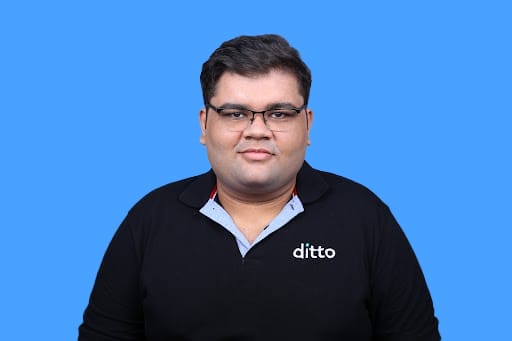When you’re hospitalized, your health insurance takes care of medical bills. But what about non-medical expenses, such as food, travel, or the lost income of the caretaker? That’s where hospicash comes in. Also known as hospital cash insurance, this supplemental plan provides daily cash benefits during hospitalization. It ensures you're not financially strained due to indirect expenses. However, the payouts are fixed regardless of actual costs and will only be reimbursed after you’ve been discharged. So, what is hospicash, and do you need it? Let’s find out!
Overview
Insurance shouldn’t be confusing. That’s why we’re here. If you’re unable to understand how the claim settlement ratio affects you or need help choosing the perfect policy for all your needs, speak to a Ditto advisor and find the ideal plan for you. Book a call now.
What is Hospicash?
Hospicash, also known as a hospital cash benefit, is a fixed daily payment you receive during hospitalization. It is intended to cover non-medical expenses, but you can use it however you deem fit.
While regular health insurance reimburses actual treatment costs, hospicash insurance provides a predetermined daily amount, depending on the cover amount that you choose, regardless of your bills. This extra cushion helps with expenses such as food, travel, lodging, or income loss.
By combining both, you get comprehensive coverage for both medical and incidental costs during a hospital stay. However, please note that you will not receive this amount at the time of the actual hospitalization and will only be reimbursed once you are discharged and submit your documentation.
How Does Hospicash Work?
Hospicash offers a fixed daily cash benefit for each day you are hospitalized, typically ranging from ₹500 to ₹5,000 per day.
The best part? It doesn’t depend on the actual hospital bill. Whether your treatment costs ₹10,000 or ₹1,00,000, you will still receive the promised daily amount.
This hospital cash insurance is ideal for covering everyday non-medical expenses, such as transportation, meals, and accommodation for family members.
Key Features of Hospicash Insurance
Hospicash is recognized for its straightforward structure of a fixed daily cash benefit for each day you’re hospitalized, making it a popular choice for supplemental coverage. Let’s take a closer look at the defining features that shape most hospicash insurance or hospital cash benefit plans.
- Daily Cash Benefit:
Under most hospicash insurance plans, policyholders receive a fixed amount ranging from ₹500 to ₹5,000 per day of hospitalization. This amount is paid irrespective of the actual medical expenses, making it a helpful buffer for everyday non-medical costs. - ICU Coverage:
If you're admitted to an ICU, many hospicash benefit policies offer double the daily payout. This ensures greater financial support during more critical health episodes, where associated costs are often higher. - Waiting Period:
Most plans include a standard waiting period of 30 days from the policy's effective date. However, this condition is usually waived off for accidental hospitalizations, allowing immediate coverage in emergencies. - Exclusions & Limits:
Policies come with a cap on days and specific exclusions like pre-existing illnesses and self-inflicted injuries. These specifics can vary across insurers, so it is essential to read the fine print. We’ll dive deeper into the standard inclusions and exclusions in the latter part of this blog. - Premium Range:
One of the most significant advantages of hospicash insurance is its affordability. Premiums can start as low as ₹500 per year, making it an affordable option for individuals seeking economical ways to supplement their health coverage.
These features make hospicash and hospital cash benefit plans appealing, especially for those with budget constraints.
Types of Hospicash Coverage
Hospicash insurance is versatile and can be accessed in multiple formats depending on your coverage preferences and budget. Understanding these variations ensures you choose a hospital cash benefit plan that balances both affordability and coverage convenience.
- Standalone Hospicash Policies:
These are independent insurance products that provide only the hospicash insurance benefit. They are best suited for those who may already have health coverage and want an additional safety net specifically for non-medical hospital expenses. - Rider/Add-On Plans:
This type of hospital cash insurance is added to an existing health or life insurance policy. It improves your current plan without requiring a separate policy and is a popular option for salaried individuals and families seeking additional support. - Built into your Standard Health Insurance Policy:
Some comprehensive health insurance plans now come with an inbuilt hospital cash benefit. While not customisable, it offers the convenience of bundled coverage without the need to manage multiple policies.
Ditto’s Take
While we typically don’t recommend choosing this benefit, it can still be helpful in some instances, especially if it’s already included as part of a broader policy. In such situations, it’s worth considering, but don’t let it overshadow more essential coverage options that might provide better overall protection. Think of it as an extra-something nice to have, but not a game-changer on its own. And when it’s available as an add-on, it’s probably best to weigh the cost against the additional value it truly brings.
Benefits of Hospicash Plans
Hospicash offers more than just peace of mind. Here’s how it helps:
- Financial Cushion:
One of the main advantages of hospicash is the ability to offset income loss during hospitalization. The daily cash payout can help cover basic household expenses when your regular earnings are interrupted, considering that the primary breadwinner of the family is facing a health crisis. - Cuts Non-Medical Costs:
Expenses like travel to the hospital, meals for attendants, or even temporary lodging are rarely covered by regular insurance, and yet the amount is pretty substantial. Hospital cash insurance helps bridge that gap by offering a fixed daily allowance. - Tax Benefits:
Premiums paid toward Hospicash insurance plans qualify for deductions under Section 80D of the Income Tax Act. This provides another financial benefit for taxpayers who invest in health coverage. - Pocket-Friendly:
Hospital cash plans are designed to be accessible, with premiums starting as low as ₹500 per year. This makes them appealing. These benefits reflect why many individuals consider hospi cash insurance a practical and economical support option during hospital stays.
What’s Covered and Not Covered Under Hospicash
Every hospicash insurance policy comes with its own set of inclusions and exclusions. While it’s designed to offer flexible support, understanding the fine print is essential to avoid surprises during a claim. Moreover, coverage varies by insurer; therefore, it is necessary to read the policy terms carefully.
| What’s Covered | What’s Not Covered |
|---|---|
| Daily Hospital Allowance (fixed amount per day) | Hospital Stays under 24 hours |
| ICU stay benefits (sometimes double payout) | Cosmetic or elective surgeries |
| Accidental hospitalizations (post waiting period) | Pre-existing conditions (usually excluded for an initial period) |
| Maternity (unless specifically included in the policy) | |
| Daycare procedures (sometimes) |
Eligibility Criteria & Claim Process
Before opting for hospicash insurance, it is essential to understand who qualifies and how the claim process works. Understanding both can help you maximize your hospital cash benefit when you need it.
- Eligibility:
Most hospicash insurance plans are available to individuals aged between 18 and 65 years. Some insurers also offer coverage for dependent children under family floater plans, making it a family-friendly option. - Claim Process:
To claim the hospicash benefit, the patient must usually be hospitalized for at least 24 continuous hours. This requirement is standard across most plans and applies to both general and intensive care unit (ICU) admissions.
You will need to submit basic documents, such as
- Hospital bills,
- Discharge summaries, and
- Valid identification proof.
- Some insurers may require
- A doctor’s certificate or
- Detailed treatment notes for verification purposes.
The process is straightforward and usually quicker than regular health insurance claims.
Advantages vs Disadvantages of Hospicash Insurance
By evaluating the pros and cons, you can make an informed decision that aligns with your financial needs and risk profile.
Advantages:
- Hassle-free, fixed payouts
Hospicash pays a pre-decided amount for each day of hospitalization, regardless of actual medical bills. This makes the claim process simple, fast, and predictable. - Doesn’t overlap with regular insurance
Since Hospicash is a fixed benefit plan, it works alongside your standard health insurance without any conflict or claim overlap. - Especially helpful for salaried/self-employed individuals
It can partially replace income lost during hospitalization, especially for those who do not receive paid sick leave or are self-employed.
Disadvantages:
- Reimbursement-Based Payouts
Hospicash plans work on a reimbursement model which means that you receive the money after your hospitalization and not during the actual emergency when you might need immediate cash flow. - Amount May Feel Insufficient
With payouts typically limited to ₹500 or ₹1,000 per day in most policies, the benefit may not be significant given today’s rising medical and living costs. - Limited payout
Most plans have a cap on the number of days or the total amount you can claim, so the total benefit might not cover major hospital stays or prolonged recovery periods. - Not ideal for extended stays
If you’re hospitalized for a long time, the daily cash benefit may fall short of covering your overall expenses or income loss. - Doesn’t cover treatment expenses
Hospicash is not intended to cover surgeries, medications, or room charges. A separate health insurance policy must cover these costs.
Things to Consider Before Buying a Hospicash Plan
While Hospicash can be a helpful financial buffer during hospitalization, it’s not a one-size-fits-all solution. Before purchasing, it’s essential to evaluate its real-world value in the context of your specific situation. Making this decision requires reviewing the key policy details and comparing them with the actual benefit you'll receive.
- Duration & Payout:
Look into the daily payout amount and the maximum number of days covered. For example, if a plan offers ₹1,000 per day for 10 days, your total benefit is capped at ₹10,000. Therefore, consider whether that amount is sufficient for your needs. - Waiting Period:
Most plans come with a 30-day waiting period for non-accidental claims. However, accidental hospitalizations are often covered from the start, which is worth checking before purchasing. - Cost-Benefit Analysis:
If a Hospicash rider costs ₹3,000 annually but offers a maximum benefit of only ₹10,000 per policy year, it may not be financially worthwhile unless you’re hospitalized frequently. In many cases, setting aside that amount each year as a personal medical buffer may offer more value and flexibility. - Standalone vs Rider:
Standalone Hospicash policies operate independently, whereas riders are add-ons for existing health or life insurance policies. If you already have a comprehensive policy, a rider may be a more cost-effective and easier-to-manage option.
Understanding the fine print and doing a quick cost-benefit analysis will help you decide whether hospital cash insurance is a practical and valuable addition to your coverage.
Popular Hospicash Plans in India
Here's a quick comparison of some popular hospicash plans available in India:
| Plan Name | Plan Type | Benefit Payout Type |
|---|---|---|
| HDFC ERGO Optima Secure | Add-on | ₹1,000 or ₹2,000 per day |
| Niva Bupa ReAssure 2.0 | Add-on | ₹1,000-₹4,000 per day |
| Aditya Birla Activ One (SAVR) | In-built (SAVR plan) | ₹500 per day (for Parents/Parents-in-law only) |
Let’s understand these plans in greater detail, in terms of the Hospicash perk that it offers:
- HDFC Ergo Optima Secure – Daily Hospital Cash Add-on
This add-on offers a daily cash benefit of ₹1,000 or ₹2,000 for each day of hospitalization. It can be beneficial to offset income loss or cover incidental expenses during the recovery period. The benefit is capped at 30 days per policy year, and you must be hospitalized for at least 2 days to activate this payout. - Niva Bupa ReAssure 2.0 – Hospital Cash Add-on
Ideal for those seeking higher daily coverage flexibility, Niva Bupa provides flexible payout options with this add-on. However, the payout begins only after a minimum of 2 days of hospitalization and continues up to a maximum of 30 days. Moreover, the payout is dependent on the sum insured chosen such as
- Up to INR 5 Lac base sum insured = ₹1,000 per day
- Between ₹7.5 Lacs to ₹15 lac base sum insured = ₹2,000 per day
- Above 15 lac base sum insured = ₹4,000 per day.
- Aditya Birla Activ One – SAVR Variant (Inbuilt)
Although Aditya Birla offers 7 variants, only one, the SAVR variant, includes this benefit as an inbuilt feature. It offers ₹500 per day in case either of your parents or your in-laws are hospitalized. The benefit is limited to 30 days and requires a minimum 24-hour stay. However, you can’t claim a combination of parents and in-laws at the same time, which limits the flexibility slightly.
Hospicash benefits can vary significantly in terms of who they cover, the amount they pay out, and the conditions under which they are provided. It’s essential to assess your needs, whether it’s higher coverage, flexibility, or support for parents, before choosing the right plan or add-on.
Who Should Buy Hospicash?
Hospicash plans may not be essential for everyone, but they can be especially beneficial for individuals who face a potential income gap or recurring non-medical expenses during hospital stays. Here's who should consider it seriously.
- Working Professionals:
If your job doesn’t offer paid sick leave, a hospital stay could mean a pause in income. Hospicash provides daily payouts that help compensate for this temporary financial shortfall. - Senior Citizens:
Older adults often have more frequent health concerns, and hospicash can offer extra financial relief beyond what a standard health plan covers, especially for incidental costs during hospitalization. - High-Risk Individuals:
Individuals with chronic conditions or occupations that expose them to health risks may experience more frequent hospital stays. Hospicash helps ease the burden of repeated non-medical expenses. - Dependents' Caregivers:
Suppose you're responsible for the health of aging parents or children. In that case, Hospicash can serve as a buffer against the unexpected costs associated with their hospital visits, without depleting your savings every time.
If you belong to any of these groups, a hospicash insurance plan may offer peace of mind and financial convenience during challenging times.
Ditto’s Take
When selecting a health insurance policy, consider whether a hospital cash benefit aligns with your financial and healthcare needs. Hospicash insurance can help cover non-medical expenses during hospitalization, but it may not be suitable for everyone. Take, for example, a scenario where you're paying ₹3,000–₹4,000 annually for a rider that offers ₹1,000 per day for up to 10 days. If you aren’t hospitalized within the policy period, that cost may seem unjustified. This is why it’s crucial to weigh the pros and cons of Hospicash Insurance before opting in.
Ultimately, Hospicash can serve as a thoughtful supplement, but it should not be seen as a replacement for comprehensive health coverage. To make a well-informed decision, you should continually evaluate your needs, budget, and existing insurance coverage.
If you need more clarity, feel free to consult with Ditto’s IRDAI-certified insurance advisors. We offer unbiased, personalized, and spam-free advice on all aspects of insurance, including health, term, and understanding the fine print of hospital cash benefits. Let us help you choose what fits you best.
Why Choose Ditto for Health Insurance?
At Ditto, we’ve assisted over 3,00,000 customers with choosing the right insurance policy. Why customers like Srinivas below love us:
✅No-Spam & No Salesmen
✅Rated 4.9/5 on Google Reviews by 5,000+ happy customers
✅Backed by Zerodha
✅100% Free Consultation
You can book a FREE consultation here. Slots are filling up quickly, so be sure to book a call now!
FAQs on Hospicash Insurance
Is Hospicash a rider or a separate plan?
It can be both, as it is available as a standalone policy or add-on rider.
Can it be used with regular insurance?
Yes, it complements your main policy and can be claimed in conjunction with it.
Are there tax benefits?
Yes, under Section 80D of the Income Tax Act.
Do all insurers offer it?
No, but many top insurers, such as HDFC ERGO, Niva Bupa, and Aditya Birla, provide hospicash insurance options.
Conclusion
Understanding the meaning of hospicash is crucial for anyone aiming to build a well-rounded health safety net. While not a substitute for regular health insurance, hospicash is a fixed daily benefit paid during hospitalization, helping cover non-medical expenses or income loss. It’s best used as a supplement to your primary health policy. Before purchasing, verify the daily payout, waiting periods, exclusions, and maximum benefit limits to ensure they align with your needs.
Last updated on:










